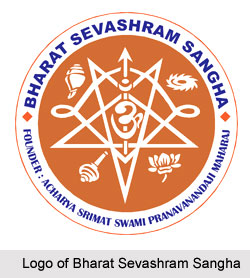 The Bharat Sevashram Sangha is a non governmental organisation in India. It is a well known Hindu charitable association that was established by Acharya Srimat Swami Pranavanandaji Maharaj in the year 1917. It is headquartered in the city of Kolkata in West Bengal. Bharat Sevashram Sangha has numerous religious retreats or ashrams through out the country. Moreover the organisation has also set up many ashrams in other countries as well, which includes Bangladesh, Canada and United Kingdom. The Bharat Sevashram Sangha has initiated various missions in Indonesia, Malaysia and different African countries. The eminent monks from the Hindu charitable association have accompanied United Nations delegations to Lebanon and Syria.
The Bharat Sevashram Sangha is a non governmental organisation in India. It is a well known Hindu charitable association that was established by Acharya Srimat Swami Pranavanandaji Maharaj in the year 1917. It is headquartered in the city of Kolkata in West Bengal. Bharat Sevashram Sangha has numerous religious retreats or ashrams through out the country. Moreover the organisation has also set up many ashrams in other countries as well, which includes Bangladesh, Canada and United Kingdom. The Bharat Sevashram Sangha has initiated various missions in Indonesia, Malaysia and different African countries. The eminent monks from the Hindu charitable association have accompanied United Nations delegations to Lebanon and Syria.
Activities of Bharat Sevashram Sangha
The Bharat Sevashram Sangha has responded to various natural calamities in many occasions, such as in the Indian states of Orissa and Andhra Pradesh, the famine in Bengal in the year 1943, the Bhopal gas disaster, the earthquake in Gujarat in the year 2001 and the Indian Ocean tsunami in 2004. Bharat Sevashram Sangha also established war evacuee camps and refugee camps near the border territories during the periods of political unrest like the Partition of India. The non governmental organisation also organised many projects to help impoverished and destitute tribal people in the country. The Sangha also made arrangements for providing schooling to children of the Sabar tribe. Moreover it also provided them with healthcare and housing facilities. Bharat Sevashram Sangha also offers courses for the youths in order to train them in information technology so that the youths of the tribe are enabled to find jobs which require IT skills.
After the Indian Ocean earthquake in 2004, the members and monks of Bharat Sevashram Sangha proposed to establish an orphanage, school for orphans and 200 houses on the Andaman and Nicobar Islands. The organistaion was amongst the first to initiate massive relief operations in Tamil Nadu state, Chennai, Nagapattinam and Cuddalore. The Sangha constructed around 200 new houses at the village of Sonankuppam in Cuddalore. Fishing boats and nets were also distributed to local populace. The Bharat Sevashram Sangha also provides food, shelter, public safety services and medical treatment to the pilgrims at various religious fairs and places of worship in India, namely the Kumbha Mela. The Hindu charitable association actively operates free hospitals at Kolkata and Barajuri, medical units and mobile dispensary in 64 locations, a free residence for patients and their families in Navi Mumbai and 4 hospitals and residential units for leprosy patients.
In the year 2010, Bharat Sevashram Sangha established a 500 bed hospital at Joka, Kolkata, with support from the regional Government. It was inaugurated by the Indian Finance Minister as a model of private public partnerships in healthcare.



















